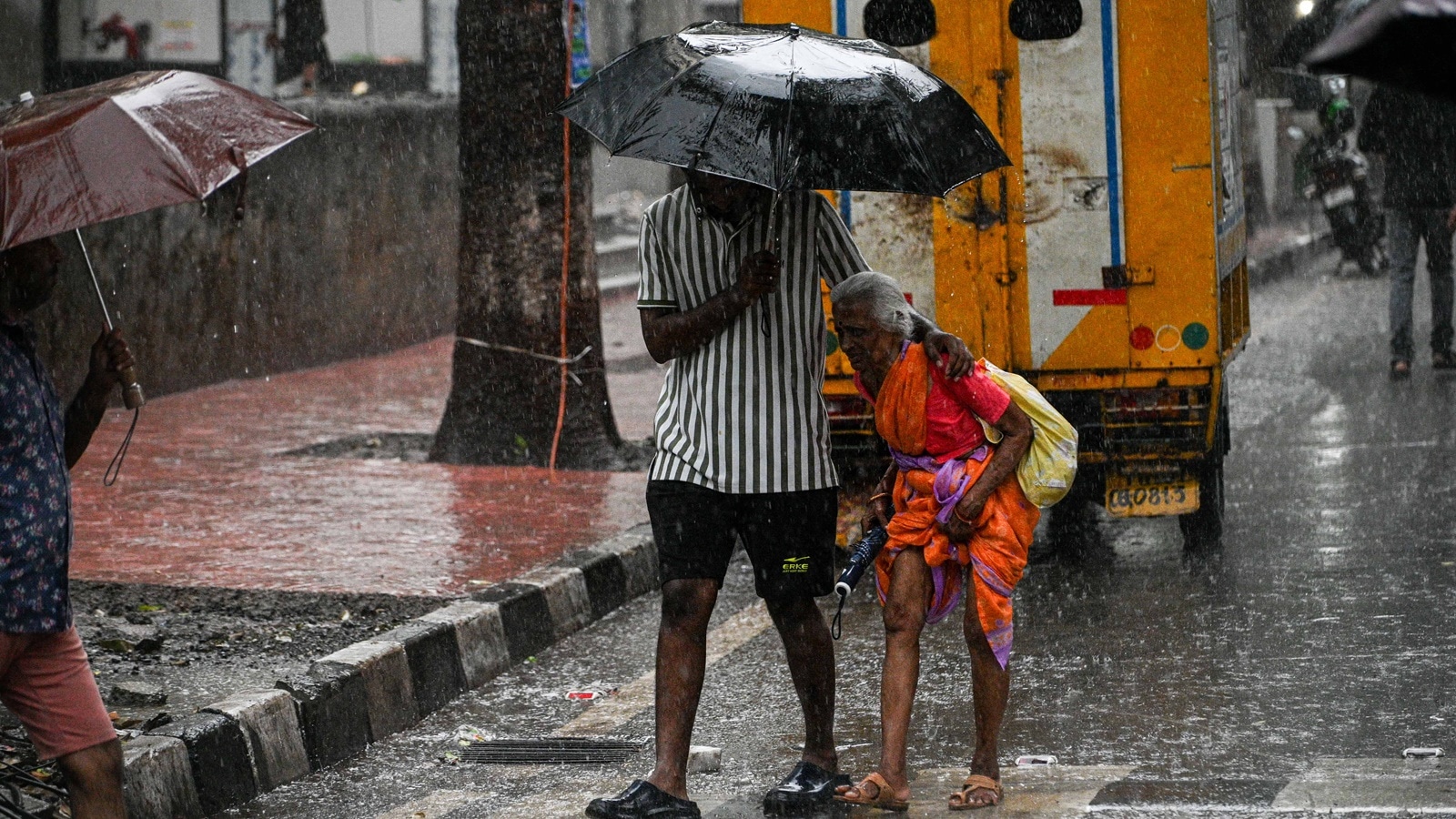 |
|
The state of Karnataka is bracing for continued heavy rainfall over the next few days, according to the India Meteorological Department (IMD). The IMD has issued a series of weather alerts, indicating the severity of the expected precipitation. A 'red' alert, the highest level of warning, is in effect for the entire state on Monday, signaling the potential for extremely heavy rainfall and associated hazards. Following Monday, an 'orange' alert has been issued for Tuesday, suggesting heavy to very heavy rainfall is still anticipated, although with a slightly reduced intensity compared to the 'red' alert level. Finally, a 'yellow' alert is in place for Wednesday, indicating that while rainfall is still expected, the severity is predicted to decrease further. The impact of the recent heavy downpour has already been felt across coastal Karnataka, particularly in the districts of Udupi and Dakshina Kannada. These regions have experienced property damage due to the excessive rainfall, highlighting the vulnerability of the area to extreme weather events. As a precautionary measure, schools have been closed in Dakshina Kannada, Chikkamagaluru, and Udupi districts in anticipation of the very heavy rainfall forecast for Monday. This decision underscores the importance placed on the safety and well-being of students and the community at large during periods of severe weather. The data from the past few days further emphasizes the intensity of the rainfall experienced in the region. In the 48-hour period leading up to 8:30 am on Saturday, parts of Dakshina Kannada district recorded rainfall exceeding 170 mm. This level of precipitation is significant and can lead to widespread flooding, landslides, and other adverse impacts. The issuance of weather alerts by the IMD plays a crucial role in informing the public and enabling them to take appropriate precautions to mitigate the risks associated with heavy rainfall. By providing timely and accurate information about the expected weather conditions, the IMD empowers individuals, communities, and government agencies to prepare for and respond to potential hazards. The ongoing heavy rainfall in Karnataka serves as a reminder of the increasing frequency and intensity of extreme weather events, which are often attributed to climate change. As the global climate continues to change, it is essential to strengthen resilience to these events through improved forecasting, early warning systems, and infrastructure development.
The 'red' alert issued for Monday necessitates a heightened level of preparedness and response. During a 'red' alert, authorities typically advise residents to avoid unnecessary travel, stay indoors whenever possible, and take measures to protect their property from potential damage. Emergency services are placed on high alert, and response teams are deployed to areas that are particularly vulnerable to flooding or landslides. The 'orange' alert for Tuesday indicates a slightly lower level of risk compared to the 'red' alert, but it still requires vigilance and caution. Residents should continue to monitor weather forecasts, avoid low-lying areas that are prone to flooding, and be prepared to evacuate if necessary. The 'yellow' alert for Wednesday suggests a further reduction in the intensity of the rainfall, but it is still important to remain aware of the potential for localized flooding and other weather-related hazards. Even with a 'yellow' alert, it is advisable to exercise caution while traveling and to avoid engaging in activities that could put oneself at risk. The decision to close schools in Dakshina Kannada, Chikkamagaluru, and Udupi districts demonstrates a proactive approach to mitigating the potential impacts of heavy rainfall. School closures help to ensure the safety of students and staff by preventing them from having to travel during periods of hazardous weather. Additionally, school buildings can be used as emergency shelters if needed. The heavy rainfall in Karnataka highlights the importance of effective disaster management planning and preparedness. Governments and communities must work together to develop strategies to mitigate the risks associated with extreme weather events, including investing in infrastructure improvements, implementing early warning systems, and providing public education and awareness programs. Furthermore, it is crucial to address the underlying causes of climate change by reducing greenhouse gas emissions and transitioning to a more sustainable economy. The challenges posed by extreme weather events are likely to become more frequent and severe in the future, making it imperative to take action now to protect communities and ecosystems from the impacts of climate change.
The economic impact of the heavy rainfall in Karnataka should also be considered. Damage to property, infrastructure, and agriculture can have significant economic consequences, particularly for communities that are already struggling. Government assistance and support are often needed to help those affected by the rainfall to recover and rebuild. The agricultural sector is particularly vulnerable to the impacts of heavy rainfall. Excessive precipitation can damage crops, erode soil, and disrupt planting and harvesting schedules. This can lead to reduced yields, increased food prices, and economic hardship for farmers. The tourism industry can also be affected by heavy rainfall. Tourists may be deterred from visiting areas that are experiencing severe weather, leading to a decline in revenue for hotels, restaurants, and other businesses. The transportation sector can also be disrupted by heavy rainfall. Flooding and landslides can close roads and railways, making it difficult for people and goods to move around. This can have a significant impact on the economy, particularly for businesses that rely on timely deliveries. The impact on daily life is substantial. Beyond the direct dangers of flooding and landslides, everyday activities are significantly disrupted. Commuting becomes difficult, potentially impacting employment and income. Access to essential services like healthcare and groceries can be hampered. Overall, the heavy rainfall situation in Karnataka underscores the complex interplay between weather patterns, disaster preparedness, economic stability, and the well-being of its citizens. Continuous monitoring, effective communication, and proactive mitigation strategies are essential for navigating these challenges and building a more resilient future.
Source: Heavy rain expected to continue across Karnataka; ‘orange’ alert tomorrow
